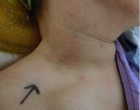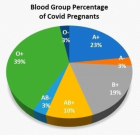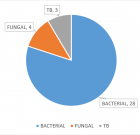Abstract
Research Article
Serological and molecular characterization of two seed born cowpea mosaic Comovirus isolates affecting cowpea plants (Vigna unguiculata L.) in northern Egypt
Mahmoud Hamdy Abd El-Aziz* and Hosny Aly Younes
Published: 01 October, 2019 | Volume 3 - Issue 3 | Pages: 086-094
Cowpea plants naturally infected with cowpea mosaic comovirus (CPMV) showed different mosaic, mottle, dwarfing, and vain clearing symptoms. Diseased plants were ollected from certain locations of Alexandria and El-Beheira governorates during the growing seasons from 2011 to 2012. CPMV was detected in infected sap at 8 to 24 days after inoculation by DBIA, indirect ELISA and tissue blot immunoassay (TBIA). Chlorotic local lesions were observed on Chenopodium amaranticolor in infectivity test. By using indirect ELISA and DBIA, CPMV were detected in infected plant sap of serial dilutions up to 1: 400. The incidence of CPMV in 21 day old cowpea seedlings grown from infected seeds was determined by ELISA and positive detection of virus antigen reached 65%. Nitrocellulose membrane and canson paper could be used as solid carriers in TBIA and DBIA for detection of CPMV in infected plant tissues. Results revealed that both faces of nitrocellulose membrane and canson paper could be used as solid carriers in TBIA for detection of CPMV in infected plant tissues. According to reverse transcription polymerase chain reaction (RT-PCR) assay of CPMV infected plant; the amplified product was approximately 800bp of partial coat protein gene. The nucleotide sequences accession number were LN606585 and LN606586. The phylogenetic tree was generated using sequences of CPMV isolates with the other CPMV records from GenBank.
Read Full Article HTML DOI: 10.29328/journal.jpsp.1001037 Cite this Article Read Full Article PDF
References
- Abd El-Aziz MH. Studies on Some Viruses Infecting Cowpea Plants. Ph.D. Thesis. Fac Agric. (Saba - Basha) Alexandria University. 2015; 136.
- Thottappilly G, Rossel HW. Virus diseases of cowpea in tropical Africa. Tropical Pest Management. 1992; 38: 337-348.
- Bruening G, Agrawal HO. Infectivity of a mixture of cowpea mosaic virus ribonucleoprotein components. Virology. 1967; 32, 306-320.
- Chant SR. The effect of infection with tobacco mosaic and cowpea yellow mosaic viruses on the growth rate and yield of cowpeas in Nigeria. Imperial J Exper Agri. 1960; 28: 114120.
- Bliss FA, Robertson DG. Genetics of host reaction in cowpea to cowpea yellow mosaic virus and cowpea mottle virus. Crop Sci. 1971; 11: 258-262.
- Chant SR. Viruses of cowpea, Vigna unguiculata L. (Walp.) in Nigeria. Ann Applied Biol. 1959; 47: 565-573.
- Van Kammen A. Cowpea mosaic virus. C.M.I/A.A.B. Description of plant viruses. Kew, Surrey, England. 1971.
- Agrawal HO. Identification of cowpea mosaic virus isolates. Mededel. Landbouw. Wageningen. 1964645: 1-61.
- Hampton R, L Beczner, D Hagedorn, L Bos, T Inouye, et al. Host reactions of mechanically transmissible legume viruses of the northern temperate zone. Phytopathology. 1978; 68: 989-997.
- Younes HA, Aseel DG, Abd El-Aziz MH. Identification and purification of cowpea mosaic comovirus isolated from infected cowpea (vigna unguiculata L.) in northern Egypt. Int J Agri Environ Res. 2018; 4: 20.
- Hamza KA, Abd El-Aziz MH, Behiry SI, Younes HA. Isolation and purification of Potato virus Y isolate infecting potato (Solanum tuberosum L.) in Al-Nubaria region. Middle East J Agri Res. 2018; 7: 1201-1207.
- Powell CA. Detection of three plant viruses by dot – immunobinding assay. Phytopathology. 1987; 77: 306-309.
- Fegla GI, El-Samra IA, Younes HA, Abd El-Aziz MH. Optimization of dot immunobinding assay (DIA) for detection of tomato mosaic virus (ToMV). J Adv Agric. Res. 2000; 5:1495-1506.
- Abd El-Aziz MH, Younes HA. Detection of Cucumber mosaic cucumovirus in infected cowpea plants (Vigna unguiculata L.) from northern Egypt. Novel Res Microbiol J. 2019: 3: 326-340.
- Lin NS, Hsu YH, Hsu HT. Immunological detection of plant viruses and mycoplasmalike organism by direct tissue blotting on nitrocellulose membranes. Phytopathology. 1990; 80: 824-828.
- Fegla GI, El-Samra IA, Younes HA, Abd El-Aziz MH. Comparative studies for detection of Tomato Mosaic Tobamovirus (ToMV), Cucumber Mosaic Cucumovirus (CMV) and Potato Y Potyviruses (PVY). Adv Agric Res. 2001a; 6: 239-254.
- Fegla0 GI, El-Samra IA, Younes HA, Abd El-Aziz MH. Plain and Filter papers as solid carriers for detection of three plant viruses by dot and tissue blot immunoassays. Adv Agric Res. 2001b; 6: 755-761.
- Abd El-Aziz MH. Detection of certain plant viruses. Ms. C. Thesis. Fac. Of Agric. (Saba–Basha) Alex. Univ. Egypt. 2000; 118.
- Phelps JP, Dang N, Rasochova. Inactivation and purification of cowpea mosaic virus like particles displaying peptide antigens from Bacillus anthracis. J Virol Methods. 2007; 141: 146-153.
- Thompson JD, Higgins DG, Gibson TJ. Improving the sensitivity of progressive multiple sequence alignment through sequence weighting, position specific gap penalties and weight matrix choice. Nucleic Acids Research. 1994; 22: 4673-4680. PubMed: https://www.ncbi.nlm.nih.gov/pubmed/7984417
- Kumar S, Tamura K, Nei M. MEGA3: integrated software for Molecular Evolutionary Genetics Analysis and sequence alignment. Brief Bioinform. 2004; 5: 150-163. PubMed: https://www.ncbi.nlm.nih.gov/pubmed/15260895
- Laughlin M, Pornpod MR, Thongmee A, Milbrath GM, Goodman RM. Isolation and some properties of a yellow subgroup member of cowpea mosaic virus from Illinois. Phytopathology. 1977; 67: 844-847.
- Fegla GI, Fath-Allah MM, Younes HA. Alfalfa mosaic alfamovirus in alfalfa floral parts, pods and seeds at different stages of development. J Agric Sci. Mansoura Univ. 2004; 29: 4931-4939.
- Gilmer RM, Whitney WK, Williams RJ. Epidemiology and control of cowpea mosaic in western Nigeria. In Proceedings of First IITA Grain Legume Workshop. IITA Ibadan, Nigeria. 1974.
- Thottappilly G, Rossel HW. Seed transmission of cowpea yellow mosaic virus unlikely in cowpea. Tropical Grain Legume Bulletin. 1988; 34: 27-28.
- Makkouk KM, Kumari SG. Detection of ten viruses by the tissue-blot immunoassay (TBIA). Arab Journal of Plant Protection. 1996; 14: 3-9.
- Sherwood JL. Comparison of a filter paper immunobinding assay, western blotting and an enzymelinked immunosorbent assay for the detection of wheat streak mosaic virus. J Phytopathology. 1987; 118: 6875.
- Heide M, Lang L. Detection of Potato leaf roll virus and potato viruses M, S, X and Y by dot immunobinding on plain paper. Potato Research. 1988; 31: 367-373.
- Lange L, Jomantor A, Heide M. Testing seeds for viruses by dot immunobinding (DIB) directly on plain paper. Tidsskrift-for-Planteavl. 1989; 93: 93-96.
- Al Khalaf M, Kumari SG, Haj Kassem AA, Makkouk KM, Al Chaabi S. Use of the two faces of nitrocellulose membrane in tissue blot immunoassay for the detection of Bean yellow mosaic virus and the possibility of its mechanically transmitted from the printed membrane to the host plant. Arab J Plant Protection. 2009; 27: 91-94.
- Hadidi A, Levy L, Podieckis V. Polymerase chain reaction technology in plant pathology. In: Molecular methods in Plant Pathol. Singh RP, Singh US. (eds.) CRC press. Boca Raton, FL. 1995; 167-187.
- Hsu HT, Lawson RH. Direct tissue blotting for detection of tomato spotted wilt virus in Impatiens. Plant Disease. 1991; 75: 292-295.
- Klein RE, Wyatt SD, Kaiser WJ, Mink GI. Comparative immunoassays of bean common mosaic virus in individual bean (Phaseolus vulgaris) seed and bulked bean seed samples. Plant Dis. 1992; 76:57-69.
- Lizarraga C, Fernandez-Northcote EN. Detection of Potato Viruses X and Y in Sap Extracts by a Modified Indirect Enzyme-Linked Immunosorbent Assay on Nitrocellulose Membranes (NCM ELISA). Plant Dis. 1989; 73: 11-14.
- Thompson KG, Dietzgen RG, Gibbs AJ, Tang YC, Liesack W, et al. Identification of Zucchini yellow mosaic virus by RT-PCR and analysis of sequence variability. J Virol Methods. 1995; 55:83-96. PubMed: https://www.ncbi.nlm.nih.gov/pubmed/8576311
Figures:
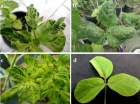
Figure 1
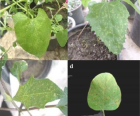
Figure 2
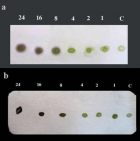
Figure 3
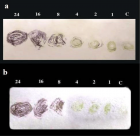
Figure 4

Figure 5
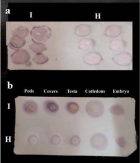
Figure 6
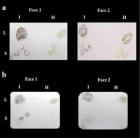
Figure 7
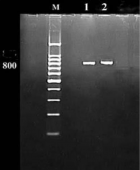
Figure 8

Figure 9
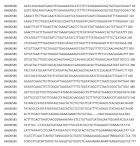
Figure 10
Similar Articles
-
Impact of Calcium Phosphate Nanoparticles on Rice PlantHrishikesh Upadhyaya*,Lutfa Begum,Bishal Dey,P K Nath,S K Panda. Impact of Calcium Phosphate Nanoparticles on Rice Plant. . 2017 doi: 10.29328/journal.jpsp.1001001; 1: 001-010
-
The Effects of Pharmacological Carbonic Anhydrase Suppression on Defence Responses of Potato Leaves To Phytophthora InfestansMagdalena Arasimowicz-Jelonek*,Jolanta Floryszak-Wieczorek. The Effects of Pharmacological Carbonic Anhydrase Suppression on Defence Responses of Potato Leaves To Phytophthora Infestans. . 2017 doi: 10.29328/journal.jpsp.1001002; 1: 011-025
-
Phytochemical content of leaf and stem of Marsilea quadrifolia (L.)Rajangam Udayakumar*,Karikalan Gopalakrishnan. Phytochemical content of leaf and stem of Marsilea quadrifolia (L.). . 2017 doi: 10.29328/journal.jpsp.1001003; 1: 026-037
-
Antagonistic features displayed by Plant Growth Promoting Rhizobacteria (PGPR): A ReviewMohsin Tariq*,Muhammad Noman,Temoor Ahmed,Amir Hameed,Natasha Manzoor,Marriam Zafar. Antagonistic features displayed by Plant Growth Promoting Rhizobacteria (PGPR): A Review . . 2017 doi: 10.29328/journal.jpsp.1001004; 1: 038-043
-
Wild-type Agrobacterium rhizogenes-mediated gene transfer in plants: Agrobacterium virulence and selection of transformantsShu Wei*,Muhammad Abdullah,Ferdinand L Shamalla,Mohammad M Rana. Wild-type Agrobacterium rhizogenes-mediated gene transfer in plants: Agrobacterium virulence and selection of transformants. . 2017 doi: 10.29328/journal.jpsp.1001005; 1: 044-051
-
Effects of Vochysia haenkeana extract on the neuromuscular blockade induced by Bothrops jararaca venom on chick biventer cervicis preparation in vitroYoko Oshima-Franco*,Fernanda Dias da Silva,Natália Tribuiani,Isadora Caruso Fontana Oliveira,Regina Yuri Hashimoto Miura,Rafael S Floriano,Márcio Galdino dos Santos,Sandro Rostelato-Ferreira. Effects of Vochysia haenkeana extract on the neuromuscular blockade induced by Bothrops jararaca venom on chick biventer cervicis preparation in vitro. . 2017 doi: 10.29328/journal.jpsp.1001006; 1: 052-058
-
HBV: Genomic Structure, HBVsAg Isolation and innovative Virotherapy Initiation in the Middle EastAboul-Ata E Aboul-Ata*,Essam M Janahi,I M El-Kalamawy,Kathleen Hefferon,Amal Mahmoud. HBV: Genomic Structure, HBVsAg Isolation and innovative Virotherapy Initiation in the Middle East . . 2017 doi: 10.29328/journal.jpsp.1001007; 1: 059-061
-
Physiological impact of Zinc nanoparticle on germination of rice (Oryza sativa L) seedUpadhyaya H*,Roy H,Shome S,Tewari S,Bhattacharya MK,Panda SK. Physiological impact of Zinc nanoparticle on germination of rice (Oryza sativa L) seed . . 2017 doi: 10.29328/journal.jpsp.1001008; 1: 062-070
-
Effects of Site Factors on the Clonal Growth of Phyllostachys bambusoides f. shouzhu YiXiaohong Gan*,Lijuan Chen,Cuibin Tang,Xia Zhang. Effects of Site Factors on the Clonal Growth of Phyllostachys bambusoides f. shouzhu Yi. . 2017 doi: 10.29328/journal.jpsp.1001009; 1: 071-079
-
Evaluation of genetic diversity in germplasm of paprika (Capsicum spp.) using random amplified polymorphic DNA (RAPD) markersRueda-Puente EO*,Renganathan P,Ruíz-Alvarado C,Hernández-Montiel LG,Prasath Duraisamy. Evaluation of genetic diversity in germplasm of paprika (Capsicum spp.) using random amplified polymorphic DNA (RAPD) markers. . 2017 doi: 10.29328/journal.jpsp.1001010; 1: 080-086
Recently Viewed
-
High-Performance Liquid Chromatography (HPLC): A reviewAbdu Hussen Ali*. High-Performance Liquid Chromatography (HPLC): A review. Ann Adv Chem. 2022: doi: 10.29328/journal.aac.1001026; 6: 010-020
-
Drug Rehabilitation Centre-based Survey on Drug Dependence in District Shimla Himachal PradeshKanishka Saini,Palak Sharma,Bhawna Sharma*,Atul Kumar Dubey,Muskan Bhatnoo,Prajkta Thakur,Vanshika Chandel,Ritika Sinha. Drug Rehabilitation Centre-based Survey on Drug Dependence in District Shimla Himachal Pradesh. J Addict Ther Res. 2025: doi: 10.29328/journal.jatr.1001032; 9: 001-006
-
Poly-dopamine-Beta-Cyclodextrin Modified Glassy Carbon Electrode as a Sensor for the Voltammetric Detection of L-Tryptophan at Physiological pHMohammad Hasanzadeh*,Nasrin Shadjou,Sattar Sadeghi,Ahad Mokhtarzadeh,Ayub karimzadeh. Poly-dopamine-Beta-Cyclodextrin Modified Glassy Carbon Electrode as a Sensor for the Voltammetric Detection of L-Tryptophan at Physiological pH . J Forensic Sci Res. 2017: doi: 10.29328/journal.jfsr.1001001; 1: 001-009
-
WMW: A Secure, Web based Middleware for C4I Interoperable ApplicationsNida Zeeshan*. WMW: A Secure, Web based Middleware for C4I Interoperable Applications. J Forensic Sci Res. 2017: doi: 10.29328/journal.jfsr.1001002; 1: 010-017
-
Associations of Burnout, Secondary Traumatic Stress and Individual Differences among Correctional Psychologists`Irina G. Malkina-Pykh*. Associations of Burnout, Secondary Traumatic Stress and Individual Differences among Correctional Psychologists`. J Forensic Sci Res. 2017: doi: 10.29328/journal.jfsr.1001003; 1: 018-034
Most Viewed
-
Evaluation of Biostimulants Based on Recovered Protein Hydrolysates from Animal By-products as Plant Growth EnhancersH Pérez-Aguilar*, M Lacruz-Asaro, F Arán-Ais. Evaluation of Biostimulants Based on Recovered Protein Hydrolysates from Animal By-products as Plant Growth Enhancers. J Plant Sci Phytopathol. 2023 doi: 10.29328/journal.jpsp.1001104; 7: 042-047
-
Sinonasal Myxoma Extending into the Orbit in a 4-Year Old: A Case PresentationJulian A Purrinos*, Ramzi Younis. Sinonasal Myxoma Extending into the Orbit in a 4-Year Old: A Case Presentation. Arch Case Rep. 2024 doi: 10.29328/journal.acr.1001099; 8: 075-077
-
Feasibility study of magnetic sensing for detecting single-neuron action potentialsDenis Tonini,Kai Wu,Renata Saha,Jian-Ping Wang*. Feasibility study of magnetic sensing for detecting single-neuron action potentials. Ann Biomed Sci Eng. 2022 doi: 10.29328/journal.abse.1001018; 6: 019-029
-
Pediatric Dysgerminoma: Unveiling a Rare Ovarian TumorFaten Limaiem*, Khalil Saffar, Ahmed Halouani. Pediatric Dysgerminoma: Unveiling a Rare Ovarian Tumor. Arch Case Rep. 2024 doi: 10.29328/journal.acr.1001087; 8: 010-013
-
Physical activity can change the physiological and psychological circumstances during COVID-19 pandemic: A narrative reviewKhashayar Maroufi*. Physical activity can change the physiological and psychological circumstances during COVID-19 pandemic: A narrative review. J Sports Med Ther. 2021 doi: 10.29328/journal.jsmt.1001051; 6: 001-007

HSPI: We're glad you're here. Please click "create a new Query" if you are a new visitor to our website and need further information from us.
If you are already a member of our network and need to keep track of any developments regarding a question you have already submitted, click "take me to my Query."







